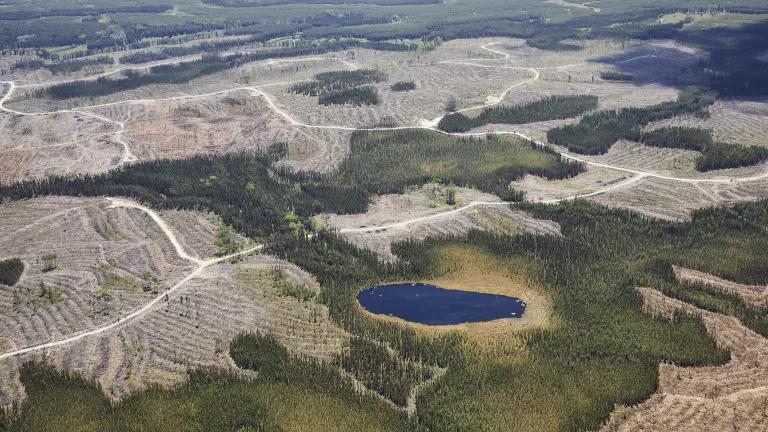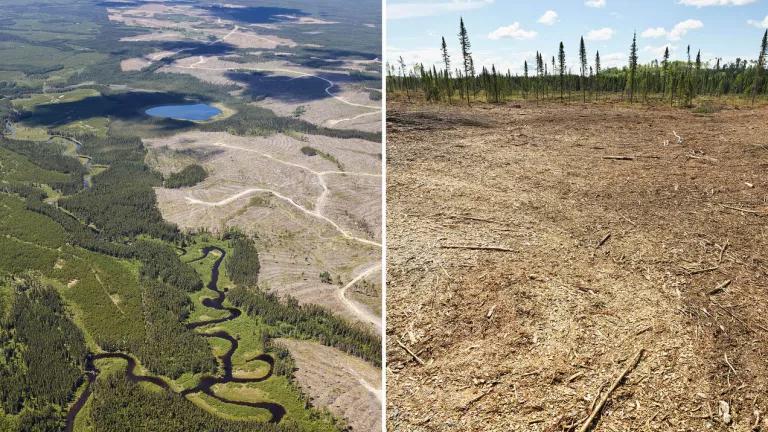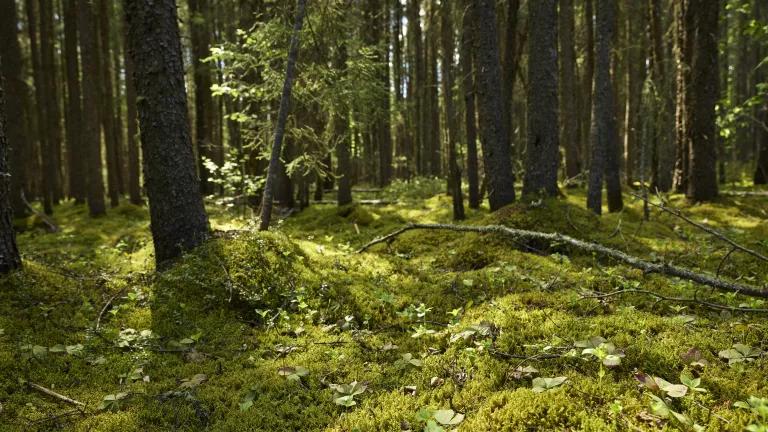
River Jordan for NRDC
This year’s International Day of Forests comes the day after the Intergovernmental Panel on Climate Change (IPCC) shattered any pretense that current action is sufficient to stem catastrophic climate change. As the IPCC made clear in its bombshell synthesis report, complacency and palliative policymaking will lock in changes that will persist for thousands of years. International Day of Forests celebrates planetary renewal and resilience, an important source of hope for a livable future. However, its appearance on the heels of the IPCC report is also a reminder that, even at this eleventh hour, there’s still an entire sector mired in 1990s-style climate denial: industrial logging.
While the IPCC report urged the need for mitigation measures “across all sectors,” industrial logging’s climate impact from eroding some of the world’s most carbon-dense forests is, quite literally, off the books. For more than three decades, the Global North has woven the myth of industrial logging’s sustainability into every corner of international forest policy. Countries like Canada have deflected attention to tropical deforestation while casting their own practices as “sustainable forest management.”
Now, that same myth permeates global and domestic climate policy, rendering invisible the climate impact of industrial logging in the Global North—the single-largest industrial driver of gross tree loss in the world.
This emissions erasure is particularly egregious in Canada, home to the incomparably carbon-dense boreal forest. Across Canada, industrial logging clearcuts more than 1.3 million acres of forest every year. Most of this is in irreplaceable primary forests, propelling Canada to the ignominious distinction of ranking third globally in intact forest landscape loss, behind Russia and Brazil. Even if the logging industry ostensibly allows trees to regrow, it is replacing singularly high-carbon landscapes with stumps and saplings—with the atmosphere seeing the difference.
According to the Canadian government’s own numbers, industrial logging accounts for more than 10 percent of the country’s annual greenhouse gas emissions, a figure roughly equivalent to emissions from the electricity sector and tar sands operations. That figure is a conservative estimate, relying on government data that exclude key dynamics, such as failed forest regrowth, and depends on the dubious integrity of provincial reporting. That estimate also integrates carbon removals from regrowing forests, which, for forests cut down today, won’t materialize for decades. Given that the IPCC report states that overshooting warming thresholds “entails adverse impacts, some irreversible,” today’s cost of logging can’t be repaid with future saplings. While tree planting is an important supplemental measure, it is no substitute for protecting full-grown forests today.
However, Canada neither transparently reports on the logging industry’s emissions nor does it include logging alongside other high-emitting sectors in its plan for meeting its 2030 climate targets. Instead, Canada buries logging’s impact within broader forest carbon flux dynamics that not only obscure logging’s impact but falsely present the forest sector as roughly carbon-neutral. This myth, enabled by flawed accounting practices that allow the logging industry to take credit for carbon removals from never-before-logged forests they had no role in growing or protecting, then feeds into Canadian policy, logging industry lobbying, and the sustainability claims of downstream purchasers of forest products like Procter & Gamble.
While the accounting biases are particularly acute in Canada, industrial logging has eluded climate accountability across the Global North. As one study showed, global modeling estimates place land-use emissions at 6.7 billion tons of carbon dioxide higher than national emissions reporting. Most of that was due, as in Canada, to differences in how countries designate forest emissions as “anthropogenic,” or human-caused.
The impacts are sweeping and insidious. In the absence of transparent accounting around the logging industry’s impact, governments have no basis for determining the climate implications of any given logging-related policy. Forest policy is essentially “climate-blind,” meaning the value to the climate of keeping carbon-rich forests standing has no relevance. Logging appears costless, or even beneficial to the climate, which incentivizes devastating false solutions like the large-scale, industrial burning of biomass and props up problematic offsets regimes. It also undermines countries’ motivation to implement commitments like the Glasgow leaders’ Declaration on Forests and Land Use and the Kunming-Montreal Global Biodiversity Framework, hobbling these potentially transformative policies from the outset.
In advance of the summit this week between President Biden and Prime Minister Trudeau, more than 80 civil society organizations and scientists have called on the two leaders to, as a baseline prerequisite to forest and climate leadership, transparently report on emissions from industrial logging. As they write, “Transparent and accurate reporting of greenhouse gas emissions is the bedrock of scientifically driven climate policy."
The IPCC was clear that the world still has time to forestall climate calamity and, through this transformation, create a healthier, more equitable society. However, forests can’t remain the playground of climate denial. Industrial logging cannot be an outlier of scientifically rigorous policymaking. Whatever the spin, whatever the euphemisms, whatever the accounting tricks, the atmosphere isn’t falling for them.




